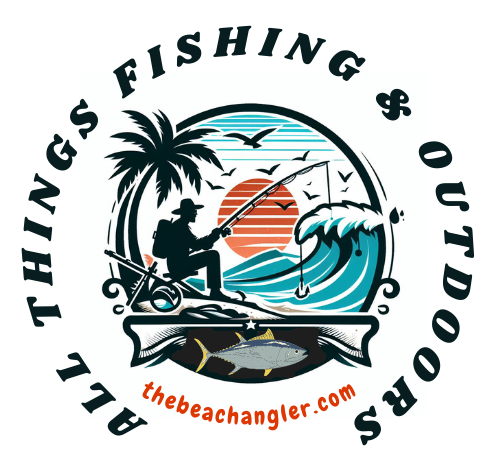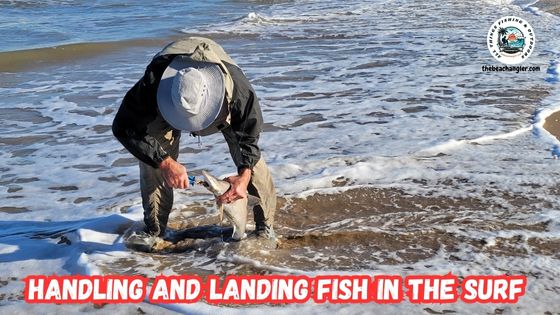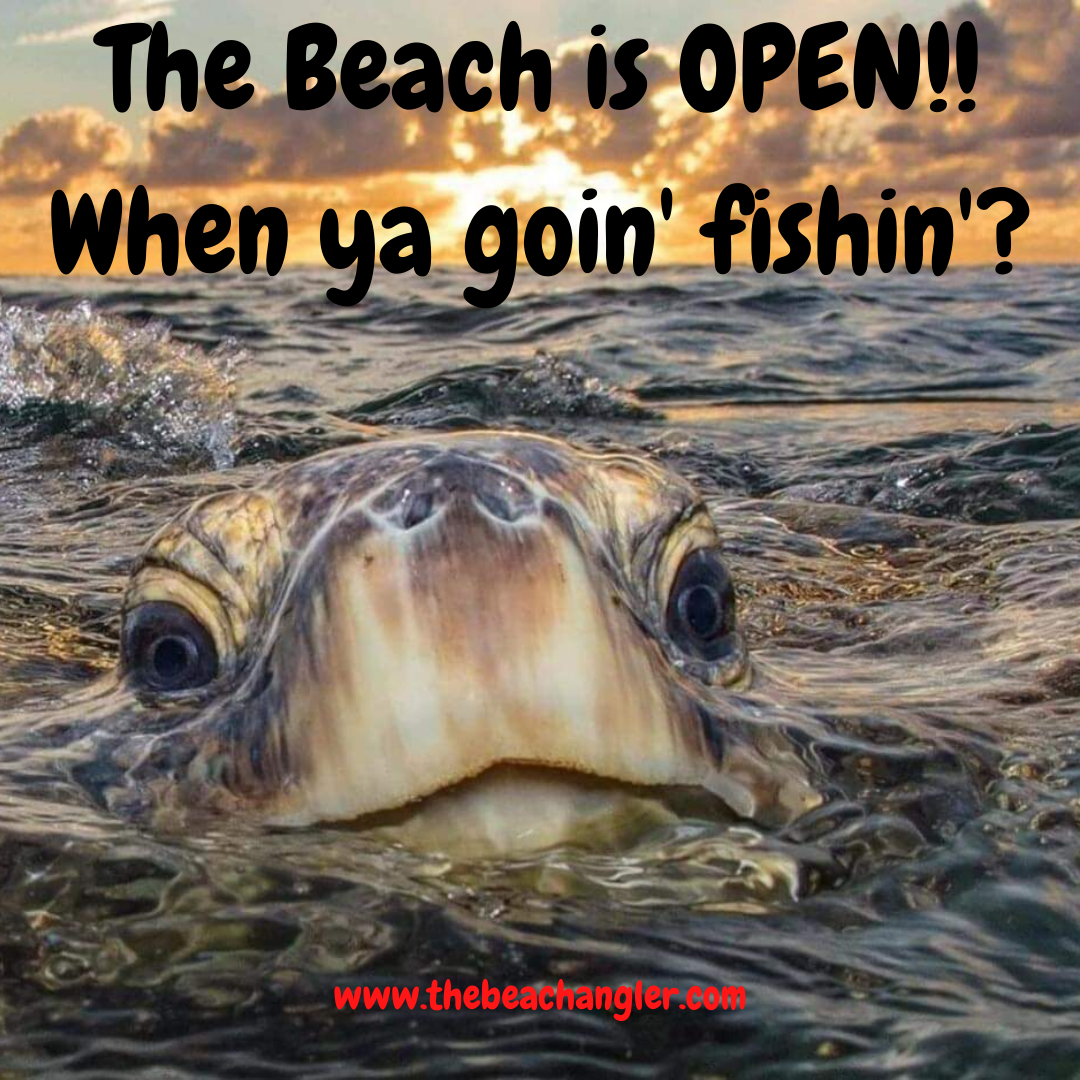Surf fishing presents a unique set of challenges and opportunities, especially when targeting big game fish. The dynamics of surf fishing involve battling with the constant motion of waves, understanding the effects of currents, and predicting changing tides.
QUICK LOOK Tips for Handling Big Fish in the Surf
- Avoid letting excitement take over when you’re reeling in close. It’s easy to get impatient, but steady reeling is crucial for maintaining tension without jerking motions. Sudden tugs can loosen the hook, and if you give the fish slack you might watch your prize slip away at the last moment.
- Timing your final attempt to land the fish with an incoming wave is essential. The wave provides natural assistance, making it easier to glide the fish smoothly onto the beach. This minimizes the struggle and helps avoid any last-minute escapes.
- Patience is definitely a virtue here. Let the fish tire itself against the pressure of the drag. This reduces their fight when finally brought to the shore and increases their chances of a stress-free release, if that’s your goal.
- Taking a calm, measured approach when landing fish ensures that both the fish’s welfare and your catch success are maximized. It’s about the thrill of the catch while respecting the marine life you’re pursuing.
- When opting to release a fish, how you handle it after the catch can heavily impact its survival. Start by supporting the fish’s body properly as you gently guide it back into the water. Allow it some time to regain its strength and orientation before letting go.
Big game fish, like striped bass, bluefish, black drum, redfish, and sharks, are often attracted to surf conditions due to the abundance of food swept in by the waves. They thrive where conditions are rough and seem almost tailor-made for their agile hunting skills. Knowing this can guide you in selecting your fishing spots wisely.
The challenge for anglers is real. Equipment matters greatly—from the right rod and reel to the strength of your line. The ability to read the water and adapt to its changes can make or break your fishing trip. And let’s not forget the weather; it can turn a seemingly perfect day into a real struggle.
In targeting big game surf fish, one must anticipate the cleverness and strength of these creatures. This means mastering a technique that balances patience with aggression, an understanding of marine behavior with the unpredictability of the ocean environment.
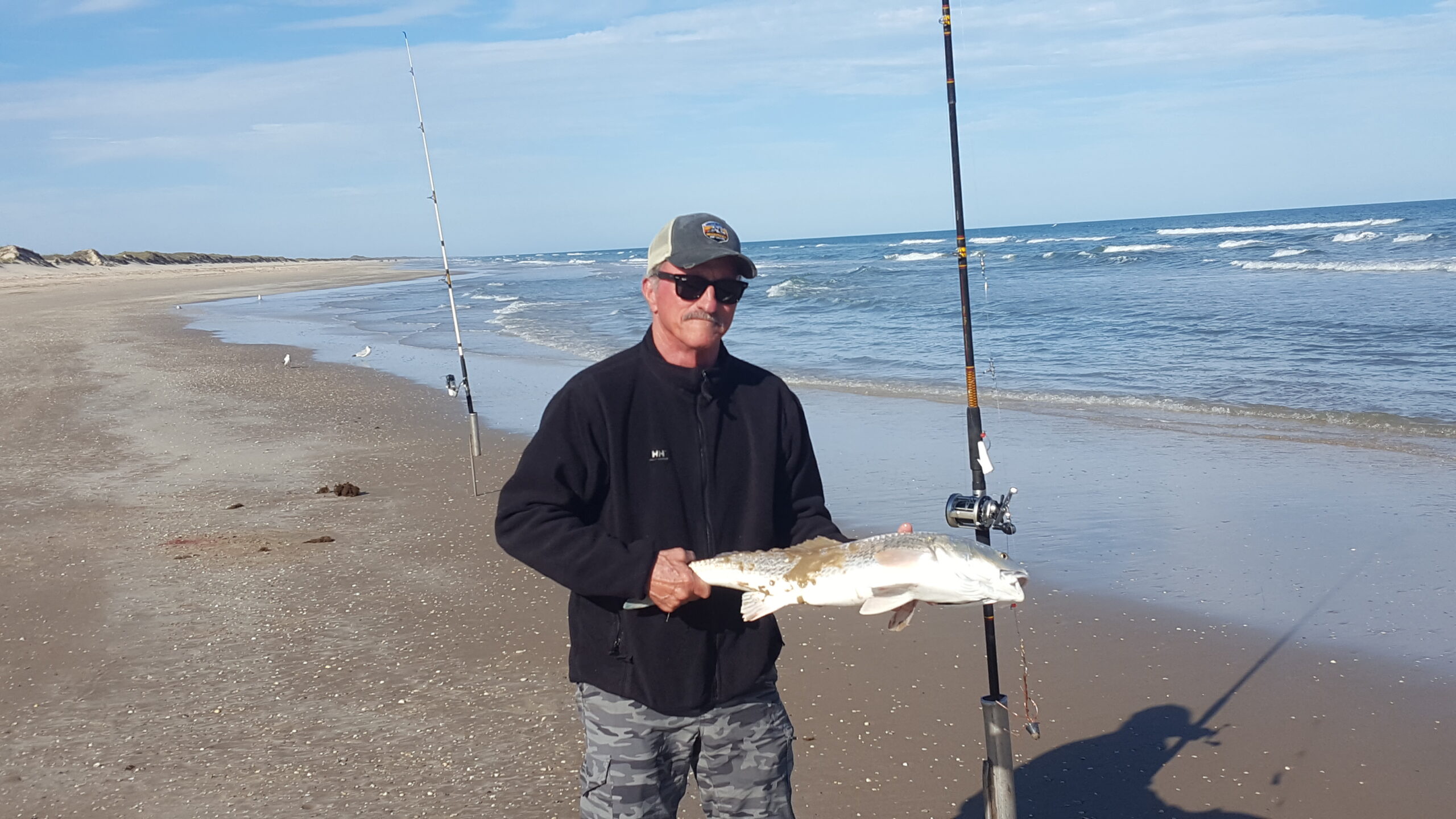
Mastering the Art of Fish Handling
Handling fish correctly when surf fishing isn’t just about the catch; it’s crucial for ensuring their survival, especially if you’re practicing catch and release. The way you manage fish once they’re out of the water can significantly impact their health.
- Start by getting your hands wet before touching the fish. This may seem minor, but it helps protect the fish’s slime coating, which is essential for their defense against parasites and disease. It’s a small step that can make a big difference.
- A firm grip is necessary, but it should also be a careful one. When you hold a fish, the best spots are behind the gills or right under the middle of their body. Be careful with the dorsal fins—many fish have sharp edges that can cause injury to both you and them if you’re not careful.
- Unhooking needs to be done as quickly and efficiently as possible. The less time the fish spends out of the water, the better. If possible, keep the fish’s body supported and maintain them at a comfortable angle while you remove the hook.
- For larger fish or situations where a secure hold is challenging, using a landing net can be invaluable. Nets allow you to handle the fish with minimal damage, keeping them in water until you’re ready to unhook. This minimizes stress and increases the chances of successful release.
Remember, the goal is to minimize the fish’s time out of the water and reduce stress, ensuring they can swim away healthy and strong. Whether you’re keeping your catch or releasing it, responsible handling is key to preserving marine life for future fishing adventures.
Harnessing the Power of Waves
Exploiting the natural movement of waves can transform the way you land big game fish in the surf. Waves can be intimidating, but they actually work to your advantage if you know what you’re doing. The key lies in timing and rhythm.
Observe the pattern of the waves, and time your reeling with the wave’s push. This helps usher the fish toward the shore without unnecessary pulling against the surf. Once the wave recedes, resist hauling the fish against the backwash, which can lead to unnecessary struggle and increased risk of losing the catch.
Using the waves to assist in landing fish isn’t just about making it easier; it also reduces stress on the fish. By aligning your efforts with the incoming waves, you create a more natural transition for the fish, minimizing their resistance and the potential for line breakage.
Proper timing also translates to healthier fish upon release. Instead of exhausting them through battling the outgoing wave, you’re letting them conserve energy. This means you have a better chance of a smooth hook removal and an easier release.
It’s all about patience and understanding the surf’s rhythm. Working with the waves rather than against them can make a huge difference, not only in landing that prized fish but also in ensuring that the fish remains in good condition through the process.
The Role of Equipment in Successful Surf Fishing
The right equipment can make all the difference when you’re out surf fishing. It’s about having tools that not only handle the harsh conditions but also give you an edge in landing those big game beauties. Selecting the right rod and reel setup is your first step.
- Your choice of surf fishing rod needs to match the size and power required for the fish you’re aiming to catch. A rod with the right balance of strength and flexibility helps you respond to sudden movements without snapping or struggling. It’s about being prepared for whatever the ocean throws at you.
- Lines and leaders are equally crucial. A strong mainline adjusted to the species and conditions you’re facing prevents the heartbreak of a snapped line just when you’ve got a hook set. Leaders help with dealing with puzzles like sharp teeth or rocky ocean floors, protecting your line from breakage or abrasion.
- Choosing the right bait can sometimes seem like an art form. Studying the local fish species and conditions can give you insights into what will work best. Whether it’s live bait or artificial lures, the bait needs to mimic the natural prey of the fish you’re targeting.
- Proper reel adjustments, particularly drag settings, are essential. Your drag should be taut enough to let you stay in control but loose enough to avoid breaking when a fish makes a strong run with the current. Getting this balance correct can be the difference between a successful catch and losing a potential record-breaker.
Techniques for Safe Landing of Big Game Fish
Landing big game fish safely isn’t just about the thrill of the catch; it’s about protecting both you and the fish. A landing net can be a game-changer here, offering a secure way to bring fish onto the beach without causing injury. It supports the fish’s weight and keeps them in water longer, reducing stress.
- Avoid letting excitement take over when you’re reeling in close. It’s easy to get impatient, but steady reeling is crucial for maintaining tension without jerking motions. Sudden tugs can loosen the hook, and you might watch your prize slip away at the last moment.
- Timing your final attempt to land the fish with an incoming wave is essential. The wave provides natural assistance, making it easier to glide the fish smoothly onto the beach. This minimizes the struggle and helps avoid any last-minute escapes.
- Patience is definitely a virtue here. Let the fish tire itself against the pressure of the drag. This reduces their fight when finally brought to the shore and increases their chances of a stress-free release, if that’s your goal.
- Taking a calm, measured approach when landing fish ensures that both the fish’s welfare and your success rate are maximized. It’s about making the most of your angling skillset while respecting the marine life you’re engaging with.
Caring for Your Catch: Keep or Release
Deciding whether to keep or release your catch is more than just a personal choice; it’s about respecting marine life and ensuring sustainability for future fishing trips. If you choose to keep the fish, immediate storage on ice is crucial to maintaining freshness and quality. This simple step ensures that the fish remains in prime condition all the way to your kitchen.
When opting to release a fish, how you handle it after the catch can heavily impact its survival. Start by supporting the fish’s body properly as you gently guide it back into the water. Allow it some time to regain its strength and orientation before letting go. Ensuring it isn’t overly exhausted will increase its chance of survival once released back into its natural environment.
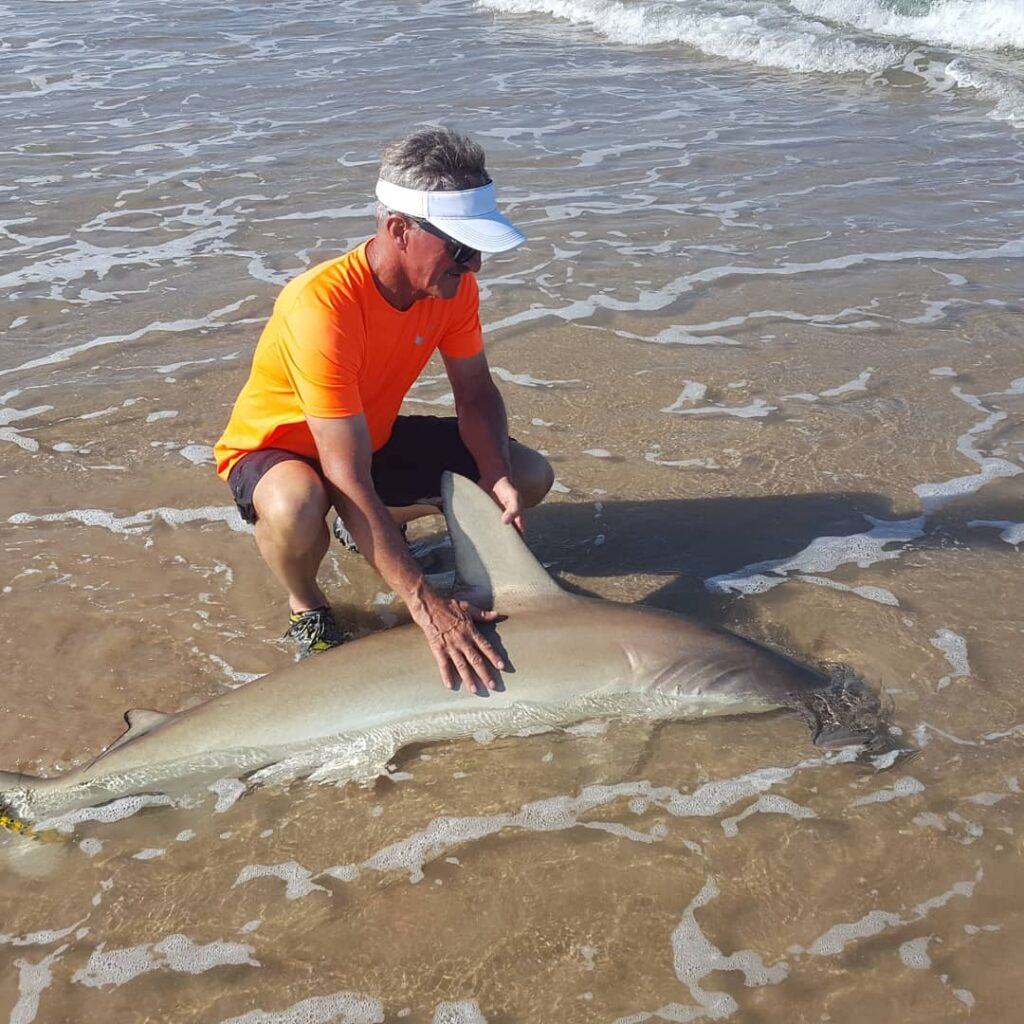
Observing the fish’s recovery signs is important before fully releasing it. Look for steady fin movement and responsiveness to gentle nudges; these indicate it’s ready to swim off independently.
Balancing your personal fishing goals with conservation efforts benefits everyone. Practicing thoughtful catch and release not only preserves fish populations but also enhances the overall fishing experience.
When well-handled, a strong release secures the health of marine ecosystems, showcases respect for the sport, and sets a positive example for fellow anglers.
Crafting a Successful Surf Fishing Experience
Creating a successful surf fishing experience relies on more than just skill; it’s about understanding your environment and adapting to changing conditions. Mastering the art of long casting is crucial, as reaching distant feeding areas increases your chances of a substantial catch.
Local conditions, such as tides and weather, require flexibility in your approach. Observing the water and making real-time adjustments based on fish behavior offers a higher chance of success.
Engaging with experienced local anglers can provide insights you might not find in a guidebook. They can offer valuable advice on tackle, bait, and tactics that work best in the specific coastal area you’re fishing.
Sustainability should always be a priority. By respecting the marine life and natural environment, we ensure the future of the sport. This means following best practices for catch and release and adhering to local fishing regulations.
Ultimately, creating an enjoyable and respectful fishing experience involves a combination of skill, preparation, and a genuine appreciation for the ocean and its creatures. A memorable day surf fishing comes from not just the size of the catch but the quality of the time spent by the sea.
Check Out These Recent Tips and Tactics:
- Saltwater Fishing For King Salmon: 4 Top Strategies.
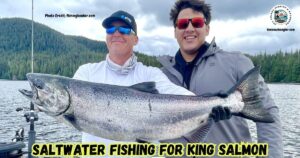
- Surf Fishing With Lucky Craft Lures
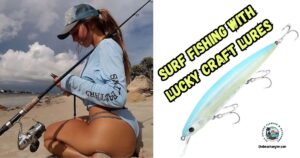
- Tips And Tactics For Saltwater Fishing With Spoons
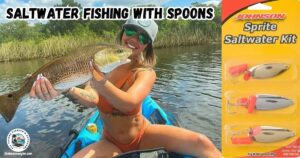
- What Is Sail Line Fishing And How To Use It?
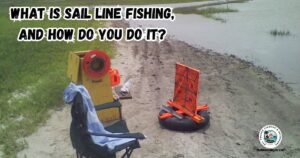
- 8 Tips on Wade Fishing The Flats For Redfish And Black Drum

- How The Wind Can Be Your Friend When Fishing Inshore Waters
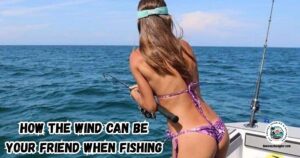
As always, stay safe, enjoy the journey and please try to leave it cleaner than you found it. If you have any comments, questions, ideas, or suggestions please leave them in the comment section below and I’ll get back to you ASAP. You can follow us on Facebook: Rex The Beach Angler, Instagram: thebeachangler7, Twitter: @AnglerBeach, and YouTube: Man Art Creations.
P.S. – Thanks so much for checking out our blog we really appreciate it. Just so you know, we may receive a commission if you click on some of the links that appear on our site. This helps us keep our content free and up-to-date for everyone. We appreciate your support!
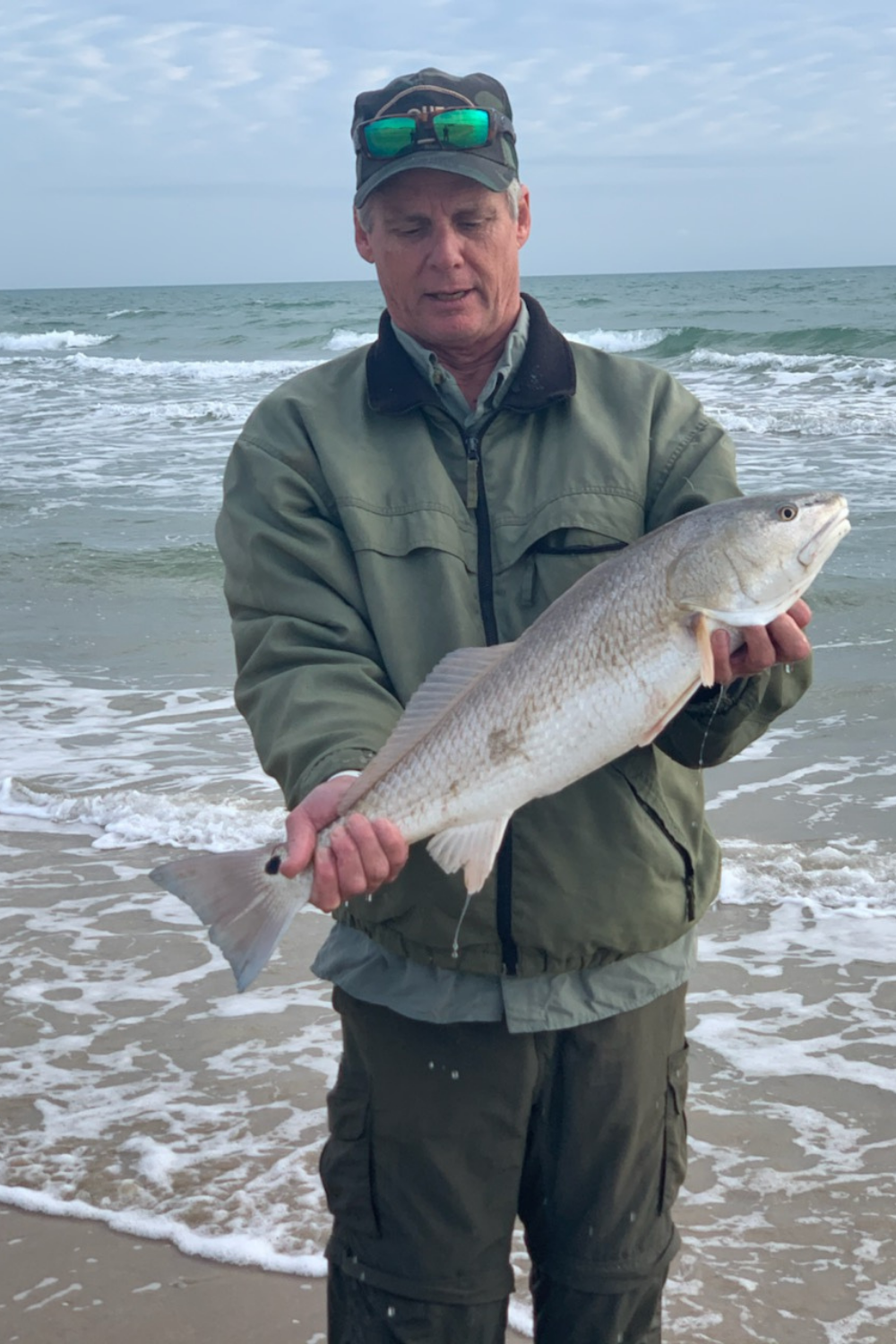
A life long surf fisherman with 50+ years of experience, I am also an avid hunter and outdoorsman. I will be sharing my passion for the outdoors with you so be prepared for hunting, fishing, camping, hiking and more. Along with gear reviews and the latest trends and innovations in the outdoor industry.
